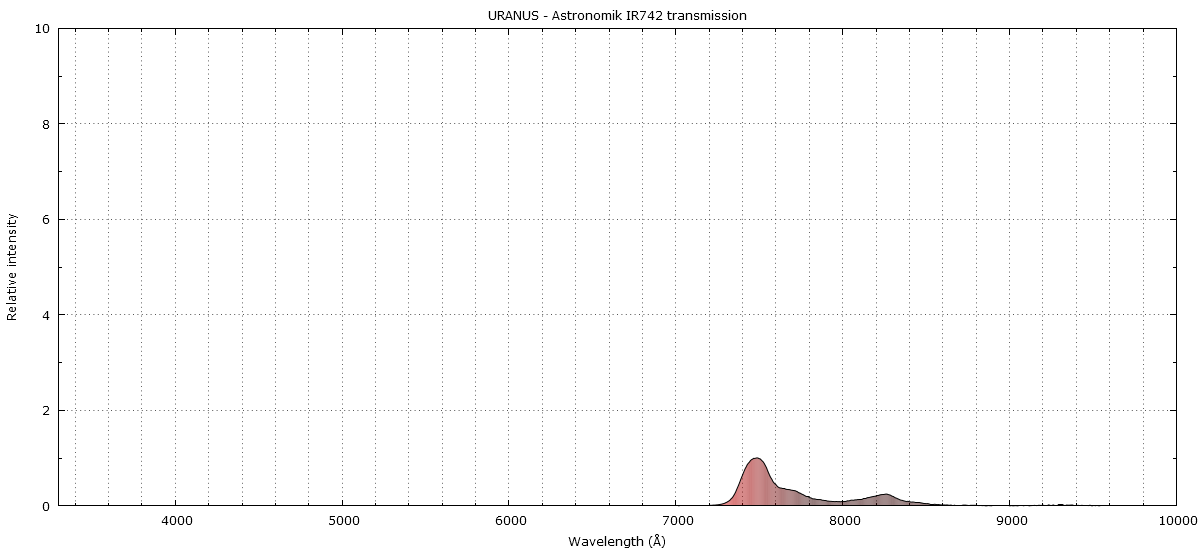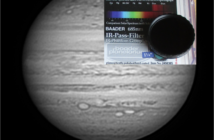To image details on Uranus, amateurs are using red and/or infrared filters. Spectroscopy is a nice tool to describle the actual effects of those filters…
Filters used to image the belts or the current bright polar region of Uranus are mainly the Baader RG 610 and IR685. On my side I have also tested the Astronomik BP642. To know more about those filters you can read my article Which IR filter is best to image planets?
To describe the behaviour of those filters and their interest, I started from the spectrum of Uranus that I then divided with synthetic filters, whose transmission have been calculated by dividing a spectrum of a star obtained with the filter, by a spectrum of the same star without the filter (or with a first level filter of order).
To the contrary of the analyse done on the preceding article Full commented Uranus spectrum, the spectrum there is not corrected from the instrument response. To understand precisely the behaviour of the filters it is necessary to start from the raw light flux as it arrived modified by the atmosphere, the telescope, the camera. Here is what this flux looks like. To see the corrected spectrum please refer to the article linked above.

The graph shows that the planet is returning a rather important blue-green flux, but that the red and infrared parts, naturally weak already, are further reduced by the camera whose response is progressively fading in the infrared. Red and IR Uranus imaging will only offer a weak quantity of light. And this is where we see most of the details! Because the weak received light is counterbalanced by a strong contrast effect brought by the deep methane absorption bands (see further). This is what the below transmissions are enlightening.
Here are the transmissions of the most common filters used on Uranus. I let them at the same scale, to be aware of the actual light transmission ratio. They are calculated by multiplying the above full spectrum of Uranus by the transmission of the filter.
Baader RG610: this filter offers the best quantity of light, because its transmits correctly the 640 nanometers continuum of reflection.



For more details, here are close-up on the different transmissions with identification of the methane bands. The Baader RG610 is the only one to (partially) pass the 619 band and the Astronomik BP642 is not passing the 890 band (but this does not change anything).







